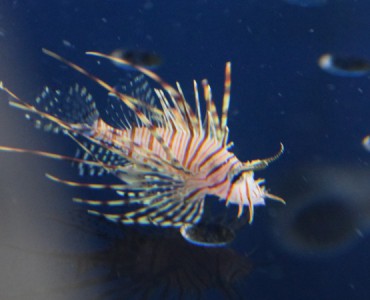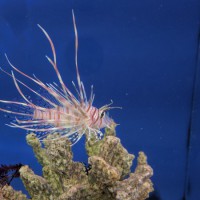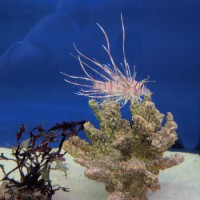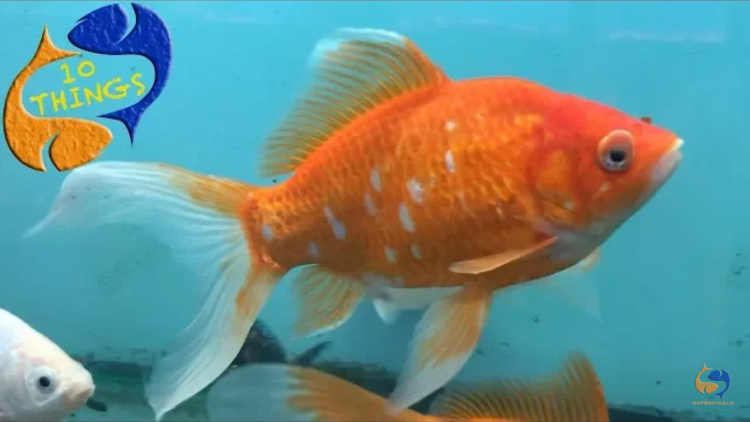- Name:
Miles Lionfish
(View AKA's) - Family: Scorpaenidae
- Species: Lionfish
- Scientific Name: Pterois miles




More Details
General info about Miles Lionfish
The Miles Lionfish it’s coloration can vary depending on the age and maturity of the fish, displaying a red to burgundy, white, and brown to black vertical stripes along the length of the body. It also has large, fan-like pectoral fins, and tall, banded spines on the dorsal fin. The Miles Lionfish is very similar to the Volitans Lionfish with the exception of their origin as this species is restricted to the Indian Ocean: Red Sea, South Africa, and east to Sumatra. The Miles Lionfish differs from the visually similar Volitan Lionfish, as Miles have fewer spines on its dorsal and anal fins. The Miles Lionfish can grow rapidly to an adult size of 15 inches, and when full grown these fishes should be housed in a large aquarium with numerous hiding places. It will hide while acclimating to its new home but then is generally found out in the open. It may eat smaller fish, shrimp, and other crustaceans in the tank. The spines on the dorsal, pelvic, and anal fins are venomous and used solely for defense. If stung, the effect is similar to a bee sting, only stronger. Lionfish venom contains proteins that are broken up by heat, which prevent them from entering the bloodstream. After a sting, remove any broken spines lodged in the wound, and immediately immerse the affected area in the hottest water you can stand (not scalding), for 30 minutes, followed by medical attention. For individuals sensitive to stings, its advisable to seek medical attention immediately.
Miles Lionfish are Venomous
Relevent Articles
Original Detail
| Name | Species | Family | Scientific Name | More Detail | Added by |
|---|---|---|---|---|---|
| Miles Lionfish | Lionfish | Scorpaenidae | Pterois miles | The Miles Lionfish it’s coloration can vary depending on the age and maturity of the fish, displaying a red to burgundy, white, and brown to black vertical stripes along the length of the body. It also has large, fan-like pectoral fins, and tall, banded spines on the dorsal fin. The Miles Lionfish is very similar to the Volitans Lionfish with the exception of their origin as this species is restricted to the Indian Ocean: Red Sea, South Africa, and east to Sumatra. The Miles Lionfish differs from the visually similar Volitan Lionfish, as Miles have fewer spines on its dorsal and anal fins. The Miles Lionfish can grow rapidly to an adult size of 15 inches, and when full grown these fishes should be housed in a large aquarium with numerous hiding places. It will hide while acclimating to its new home but then is generally found out in the open. It may eat smaller fish, shrimp, and other crustaceans in the tank. The spines on the dorsal, pelvic, and anal fins are venomous and used solely for defense. If stung, the effect is similar to a bee sting, only stronger. Lionfish venom contains proteins that are broken up by heat, which prevent them from entering the bloodstream. After a sting, remove any broken spines lodged in the wound, and immediately immerse the affected area in the hottest water you can stand (not scalding), for 30 minutes, followed by medical attention. For individuals sensitive to stings, its advisable to seek medical attention immediately. | PalaciosAn |
Changed by users
| Submitted Date | Submitted By | Status | Action |
|---|





